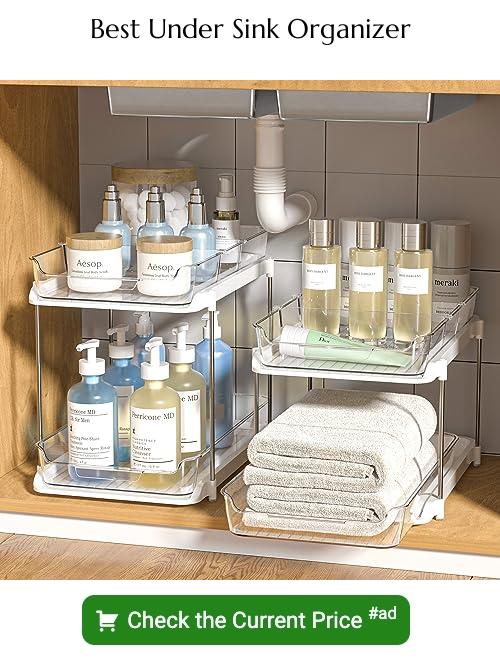Last updated on
Discover the art of concealing your kitchen sink effectively with these ingenious tips and tricks that will transform your cooking space into a clutter-free haven.
The kitchen sink is undoubtedly one of the most important fixtures in your kitchen. It’s where you wash dishes, rinse vegetables, and fill pots with water.
However, sometimes it can be an eyesore that disrupts the overall aesthetic of your kitchen design. The good news is that there are several ways to hide your kitchen sink without sacrificing its functionality.
In this article, we’ll explore some creative ideas to help you conceal your sink and create a more cohesive look in your kitchen. So let’s dive right in!
Key takeaways:
- Assess kitchen layout and choose appropriate concealment options.
- Select the right sink design for easier concealment.
- Choose sink colors that blend seamlessly with the countertop.
- Opt for undermount sinks for easier hiding.
- Utilize foldable sinks, sliding panels, or decorative curtains for concealment.
What's Inside
Assessing Kitchen Layout
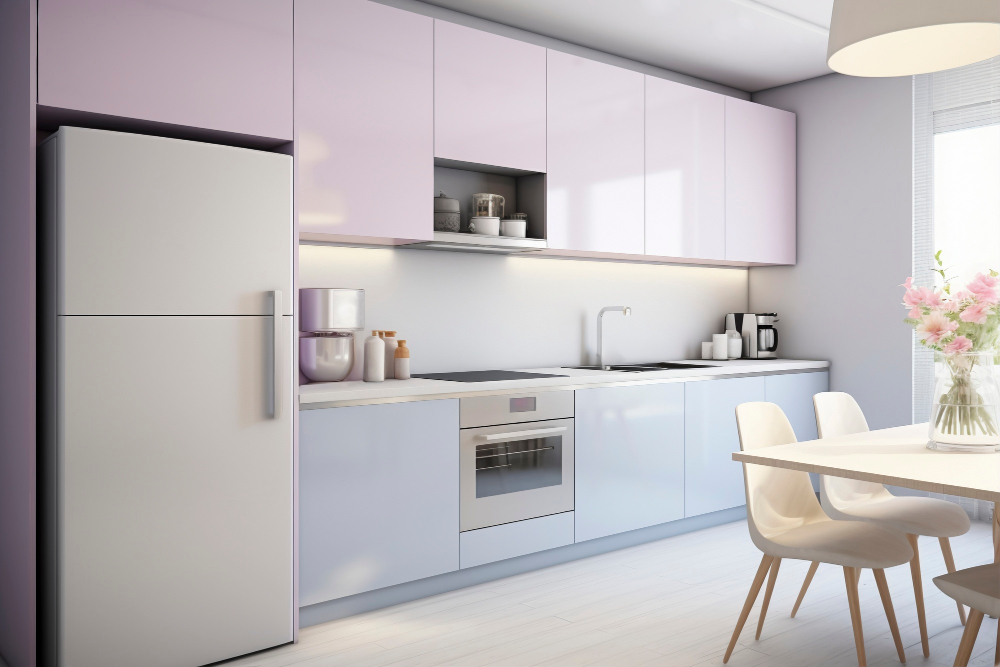
Before you start concealing your kitchen sink, it’s important to assess your kitchen layout. The position of the sink in relation to other fixtures and appliances will determine how easy or difficult it is to hide.
For instance, if your sink is located in a central area of the kitchen where it’s easily visible from all angles, then hiding it might require more creativity than if it were tucked away in a corner.
Consider the size and shape of your countertop as well. If you have limited counter space or an awkwardly shaped countertop that doesn’t allow for much flexibility when concealing the sink, then you may need to explore alternative options such as integrating appliances into its design.
Assessing these factors will help guide you towards choosing appropriate materials and designs that work best with your specific layout while still achieving a cohesive look throughout the entire space.
Choosing the Right Sink Design
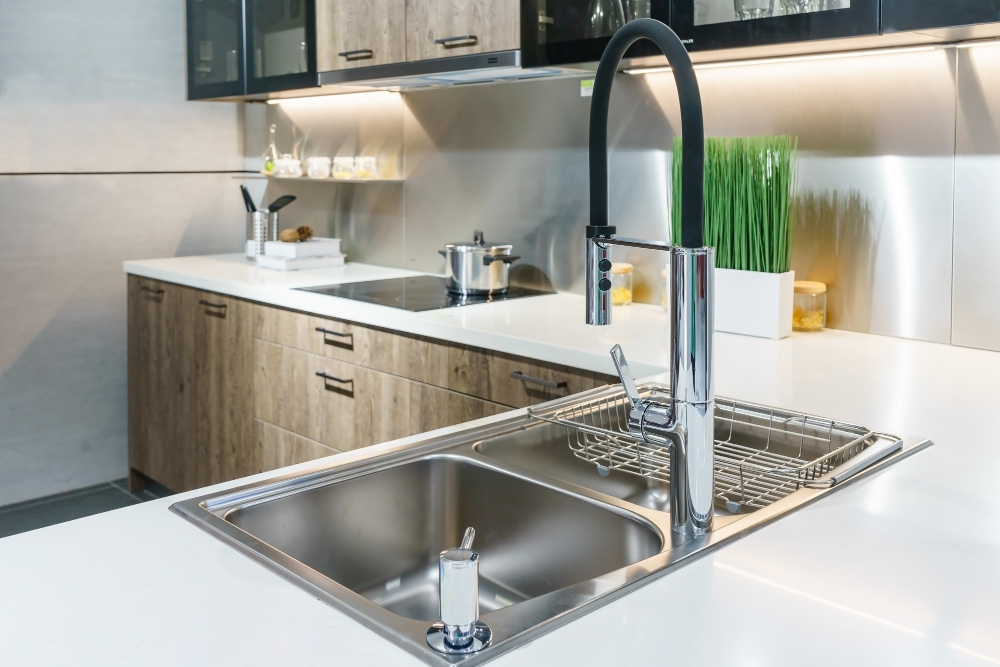
The first step in selecting a sink that can be concealed is to assess your kitchen layout and determine which type of sink will work best for you. There are several types of sinks available on the market, including top-mount, undermount, farmhouse-style apron front sinks and more.
Top-mount or drop-in sinks sit on top of the countertop with their edges resting on it while undermounts are installed underneath countertops creating a seamless look between counter and basin. Farmhouse-style apron front sinks have an exposed panel at the front that extends beyond cabinets.
Undermount designs tend to be easier to conceal than other types because they don’t have rims or lips around them that can make concealing difficult. However, if you prefer another style such as a farmhouse-style apron-front sink then there are still ways you can hide it effectively by using materials like curtains or sliding panels.
Selecting the Right Sink Colors
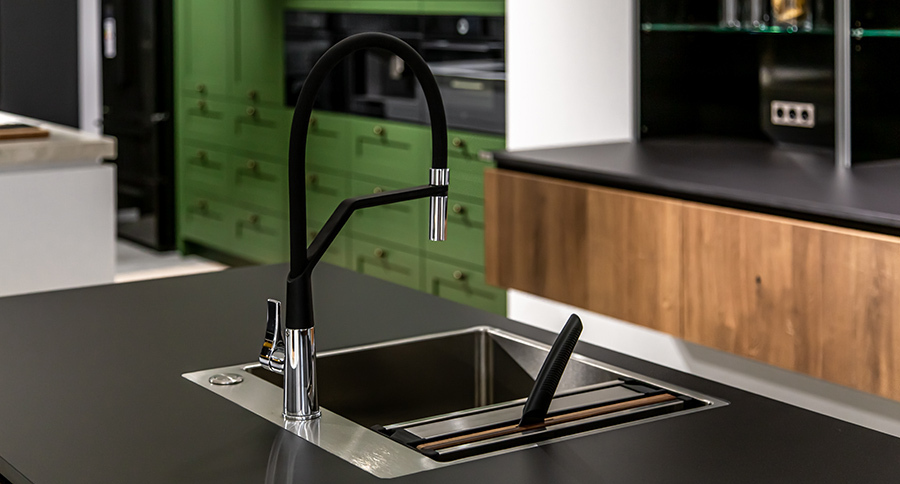
Choosing the right sink color can make all the difference in creating a cohesive look in your kitchen. If you want to conceal your sink effectively, consider selecting colors that blend seamlessly with your countertop or cabinets.
For instance, if you have white countertops and cabinets, opt for a white or stainless steel sink that will blend well with the surroundings. Similarly, if you have dark-colored cabinetry and countertops like black granite or espresso wood finishes go for darker sinks such as black composite sinks.
If you’re feeling adventurous and want to add some contrast to your space without compromising on functionality then choose bold colored sinks like reds blues greens etc., but be sure they match other elements of decor in order not clash too much.
Opting for Undermount Sinks

These types of sinks are installed underneath the countertop, which means that there is no visible rim or lip around the sink’s edge. This makes it easier to clean and maintain your countertops while also giving your kitchen a sleek and modern appearance.
When opting for an undermount sink, it’s important to choose one that fits seamlessly with your countertop material. For example, if you have granite countertops, you’ll want to select an undermount sink made from the same material so that they blend together seamlessly.
Another benefit of choosing an undermount sink is that it allows you more flexibility when designing your kitchen layout. Since there isn’t any exposed rim around the edges of these sinks, they can be placed closer to other fixtures like stovetops or refrigerators without creating awkward gaps or spaces.
Employing Foldable Sinks
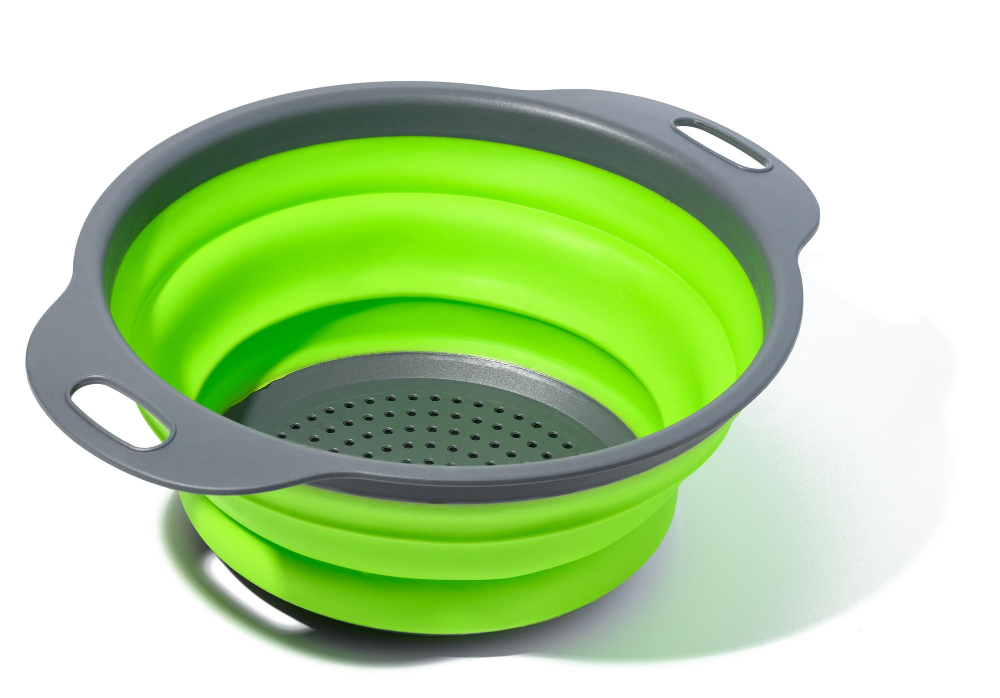
These types of sinks can be easily folded and tucked away, leaving your countertop free from any clutter. Foldable sinks come in various designs and sizes, making them a versatile choice for any kitchen layout.
One popular type of foldable sink is the collapsible silicone sink. This type of sink is made from food-grade silicone material that can withstand high temperatures and resist stains.
It’s lightweight, easy to clean, and perfect for small kitchens or outdoor cooking areas.
Another option is the retractable stainless steel sink that folds down into a compact size when not in use. This type of foldable sink provides durability while also being aesthetically pleasing with its sleek design.
Employing foldable sinks allows you to have more counter space available whenever you need it without sacrificing functionality or style in your kitchen design.
Choosing Concealing Materials
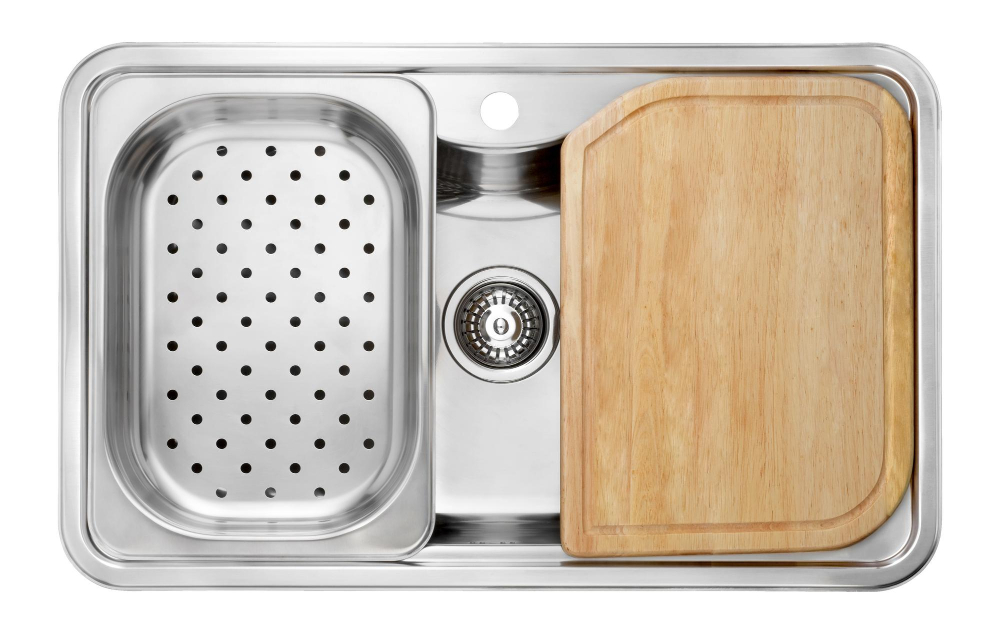
You want something that is both functional and aesthetically pleasing. One option is to use a material that matches your countertop or backsplash, creating a seamless look in your kitchen design.
Another popular choice for concealing sinks are wooden cutting boards or butcher blocks. These can be custom-made to fit over the sink when not in use, providing an additional workspace while also hiding the sink from view.
For those who prefer a more modern look, stainless steel covers are another great option. They blend seamlessly with stainless steel appliances and provide an easy-to-clean surface for food preparation.
Ultimately, choosing concealing materials depends on personal preference and overall kitchen design aesthetic.
Installing Sink Cabinets
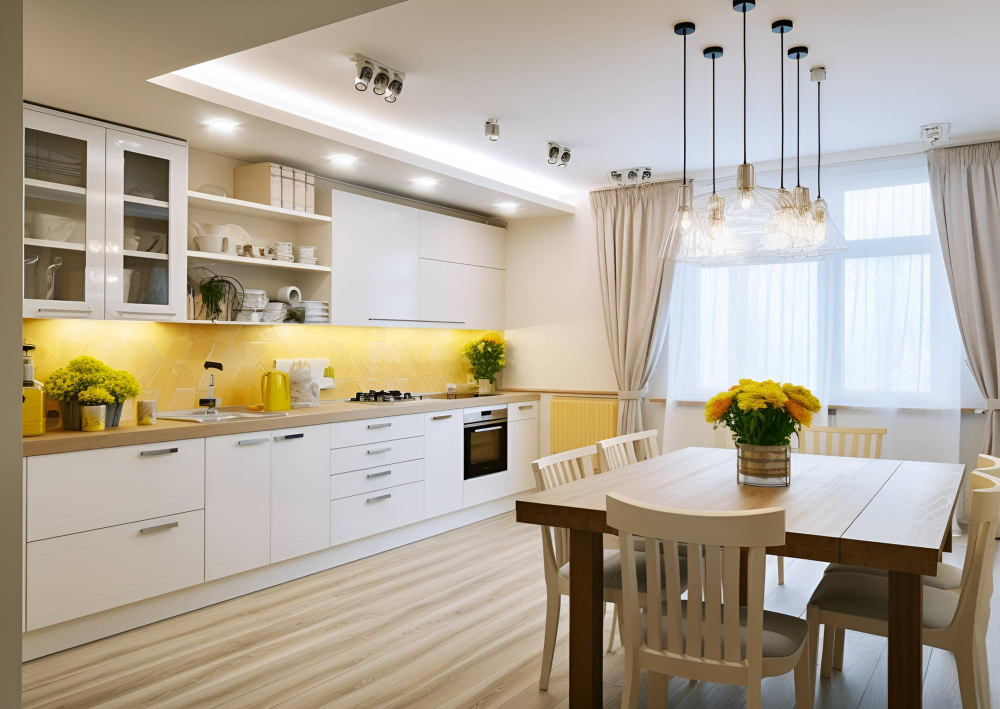
These cabinets are designed to fit around your sink, concealing it from view when not in use. They come in various sizes and styles, so you can choose one that matches your kitchen’s decor.
When selecting a cabinet for your sink, make sure it fits the dimensions of your existing countertop and plumbing fixtures. You’ll also want to consider the type of material used for construction as well as its durability over time.
Once you’ve chosen a suitable cabinet design, installation is relatively straightforward if you have some DIY experience or hire professionals who will do this job quickly and efficiently.
Sink cabinets offer an excellent solution for hiding unsightly sinks while providing additional storage space underneath them.
Designing Sliding Panels
These panels can be made from a variety of materials, including wood, glass, or metal. They can also be customized to match the style and color scheme of your kitchen.
One popular option is to install sliding wooden panels that blend seamlessly with your cabinetry. This creates a cohesive look in the kitchen and allows you to hide the sink when not in use.
Another option is using frosted glass sliding doors that add an elegant touch while providing privacy for those who prefer not having their dishes on display all day long.
If you’re feeling creative, consider designing custom-made sliding doors with intricate patterns or designs etched into them for added visual interest.
Utilizing Decorative Curtains

You can choose from various materials, patterns, and colors that complement the overall design of your kitchen. For instance, if you have an all-white kitchen with minimalistic decor, you can opt for patterned curtains in muted tones or pastel shades.
To utilize decorative curtains effectively as a sink concealer, install them on tension rods under the sink cabinet. This will allow easy access to the pipes when needed while keeping them hidden behind the curtain when not in use.
Another option is using cafe-style curtains that cover only half of the window above your sink area. These types of curtains provide privacy without completely blocking natural light from entering into space.
When choosing decorative curtains for hiding sinks in kitchens with limited counter space or small windowsills above their sinks should consider lightweight fabrics such as sheer voile or cotton blends which won’t take up too much room but still add some flair!
Exploring Sink Skirts
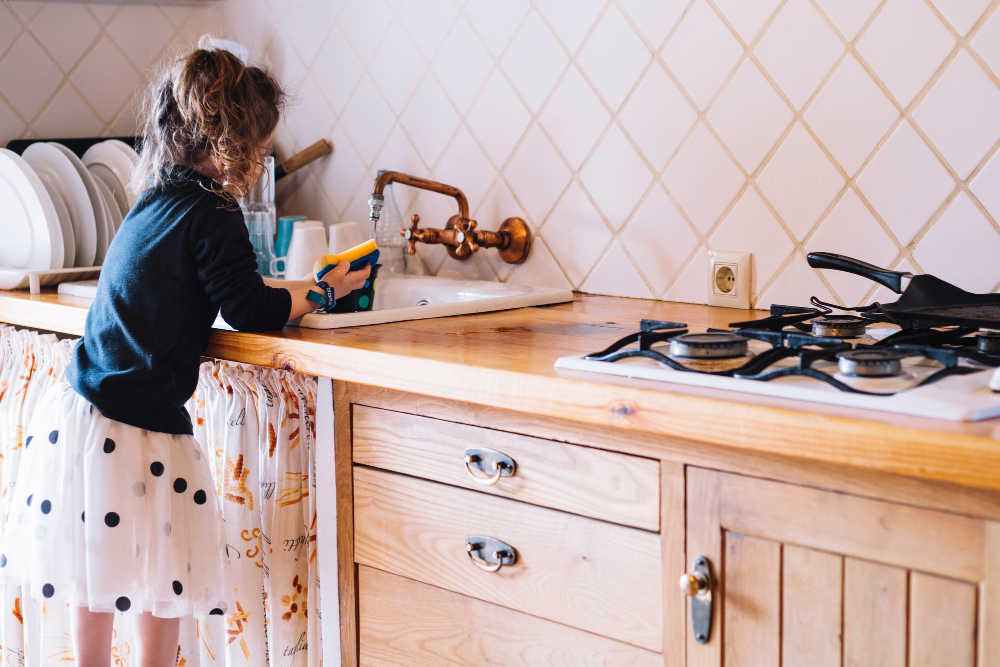
These decorative pieces can be made from various materials such as fabric, wood, or metal and come in different styles that range from simple to intricate designs.
One popular option is the ruffled skirt which adds texture and dimensionality to the area around the sink. This type of skirt is perfect for creating a cozy farmhouse-style kitchen look.
Another option is using patterned fabrics that match or complement your existing decor. You can choose bold prints for an eye-catching statement piece or subtle patterns for a more understated look.
If you prefer something more modern, consider using sleek metal skirts with clean lines that blend seamlessly into contemporary kitchens.
Regardless of what style you choose, sink skirts are easy to install and remove when it’s time for cleaning. They also provide additional storage space underneath the sink where you can store cleaning supplies or other items out of sight but within reach when needed.
Customizing Sink Covers
A customized cover can be made from various materials such as wood, stainless steel or granite that match the rest of your countertop. You can also choose to have it painted with designs or patterns that complement the overall theme of your kitchen.
A customized sink cover is an excellent option if you want to add some personality and style while keeping functionality in mind. It’s perfect for those who love DIY projects and want something unique in their home decor.
When designing a custom-made sink cover, make sure it fits perfectly over the top of your existing basin so that water doesn’t seep through any gaps around its edges. Also, ensure there are no sharp corners or rough surfaces on the underside which could scratch delicate dishes when placed inside.
Adding Built-In Cutting Boards

This is an excellent option if you have limited counter space or want to keep your sink out of sight when not in use. A built-in cutting board can be installed over the top of the sink, creating a seamless surface that blends in with your countertop.
Not only does this provide additional workspace for meal prep, but it also allows you to easily cover up the sink when entertaining guests or simply wanting a clutter-free kitchen. Plus, many cutting boards come with grooves around their edges that catch any juices from fruits and vegetables before they spill onto countertops.
When choosing a built-in cutting board for concealing your kitchen sink, make sure it’s made from durable materials such as bamboo or hardwoods like maple and cherry wood. These materials are resistant to scratches and moisture damage while being easy on knives during food preparation.
Using Fake Drawer Fronts
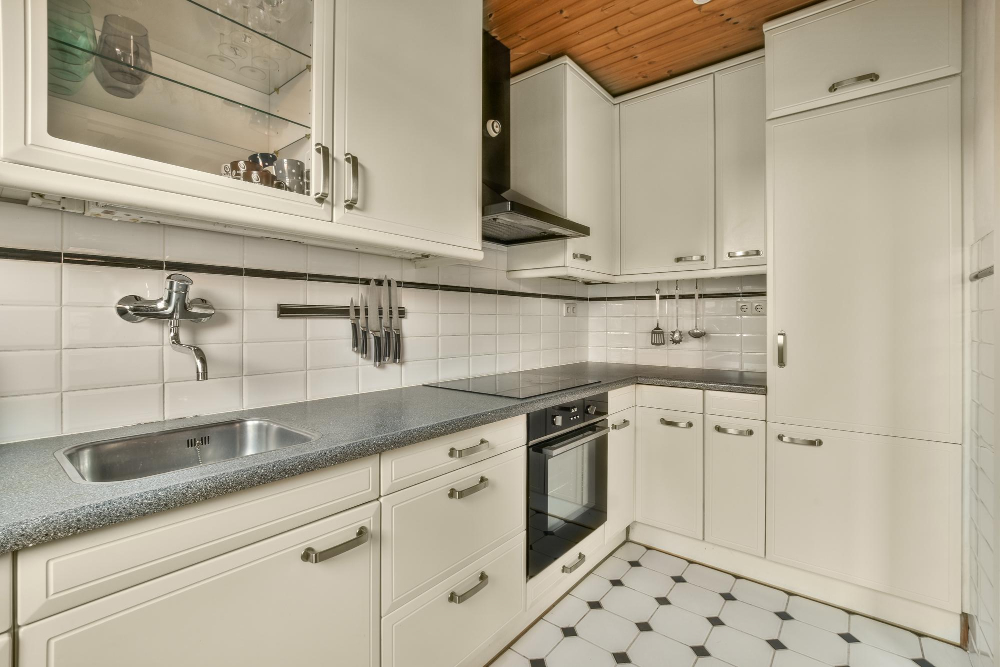
These false fronts can be installed over the front of the sink cabinet, creating a seamless appearance that blends with the rest of your cabinetry. The best part is that they’re easy to install and don’t require any major renovations.
To use fake drawer fronts, you’ll need to measure the size of your existing drawers and purchase matching panels from a home improvement store or online retailer. Once you have them, simply attach them to the front of your sink cabinet using screws or adhesive strips.
One thing to keep in mind when using fake drawer fronts is that they may not be as durable as traditional cabinets since they’re not designed for heavy use. However, if you take care when opening and closing them, they should last for years without issue.
Fake drawer fronts are an affordable and effective way to hide unsightly sinks while adding style and functionality to your kitchen design.
Camouflaging With Accessories
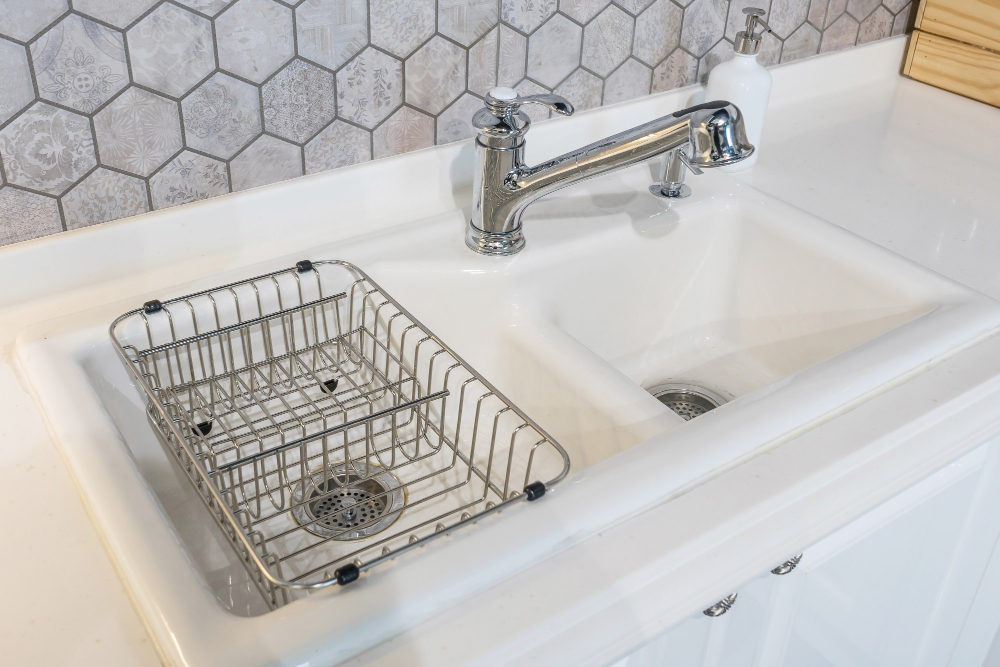
You can use decorative items such as cutting boards, dish racks, and utensil holders to cover up the sink when not in use. These accessories come in a variety of colors and designs that can complement your kitchen decor while also serving a functional purpose.
For instance, you could place a wooden cutting board over the top of your sink when you’re not using it. This will create an additional workspace for food preparation while also hiding the unsightly basin underneath.
Similarly, placing a dish rack or drying mat over the top of your sink will help conceal it from view while providing an area for dishes to dry.
Another accessory that works well for camouflaging sinks is utensil holders or caddies. These containers are perfect for holding cooking tools like spatulas and spoons within easy reach but they can also be used strategically placed around the perimeter of your sink to draw attention away from its presence.
Integrating Sink Into Countertop
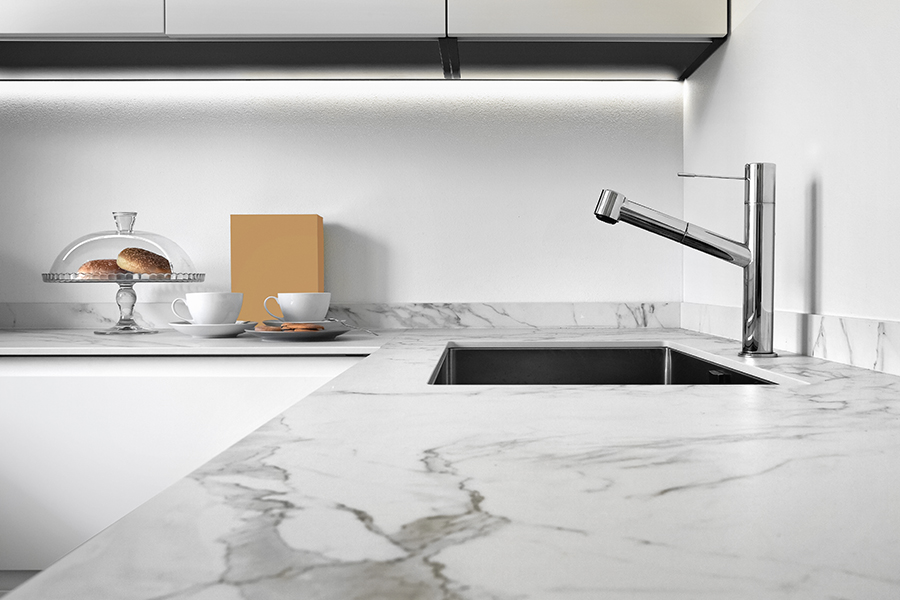
This design technique creates a cohesive look and makes the sink appear as if it’s part of the countertop itself. The key to achieving this look is selecting a material that can be molded or shaped, such as concrete or solid surface materials like Corian.
When you integrate your sink into your countertop, you’ll need to ensure that there’s enough space for water drainage and plumbing connections. You may also want to consider adding an overflow drain in case of accidental spills.
This design technique works best with undermount sinks since they sit below the counter level, creating a smooth transition between the two surfaces. Integrated sinks are easy to clean since there are no seams where dirt and grime can accumulate.
Integrating your kitchen sink into your countertop is an excellent way to create a sleek and modern look while keeping functionality intact.
Comparing Retractable Faucets
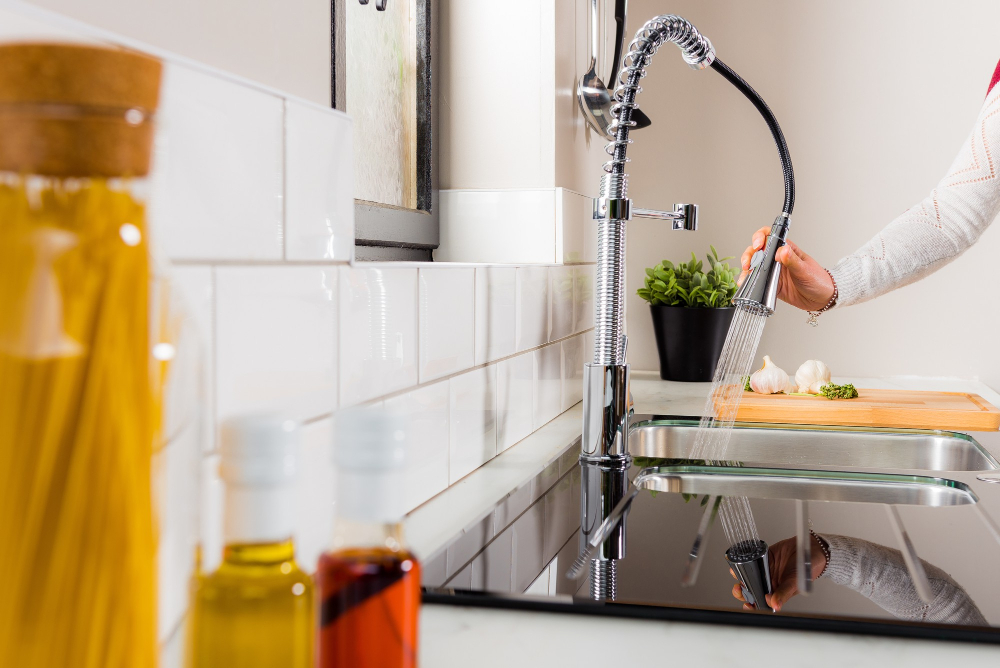
These types of faucets have a retractable hose that can be pulled out and used to wash dishes or fill pots with water. When not in use, the hose retracts back into the faucet, making it virtually invisible.
When comparing retractable faucets, there are several factors to consider. First and foremost is functionality – you’ll want a faucet that works well and is easy to use.
Look for models with high-quality hoses that won’t kink or tangle easily.
Another important consideration is style – you’ll want your retractable faucet to match the overall aesthetic of your kitchen design. Choose a finish (such as chrome or brushed nickel) that complements your sink and other fixtures.
Think about convenience features like touchless activation or adjustable spray patterns. These can make using your retractable faucet even easier and more enjoyable.
Retractable Sink Storage Solutions
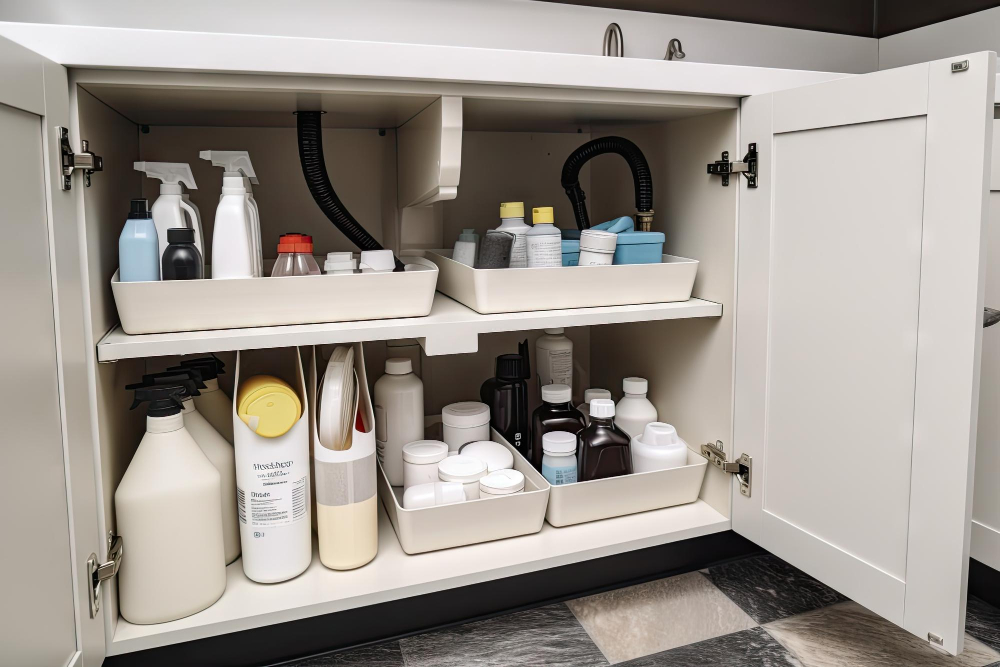
These innovative designs allow you to store sponges, dish soap, and other cleaning supplies out of sight when not in use. One popular option is the pull-out caddy that attaches to the side of your sink cabinet.
This caddy can be easily pulled out when needed and pushed back in when not in use.
Another retractable solution is an under-sink organizer with sliding baskets or drawers that provide easy access to all your cleaning supplies while keeping them hidden from view. You can also opt for a roll-out tray that fits inside the cabinet under your sink.
These retractable storage solutions come in various sizes, shapes, materials, and colors so you can choose one that matches your kitchen decor seamlessly while providing maximum functionality.
Discreet Sink Placements
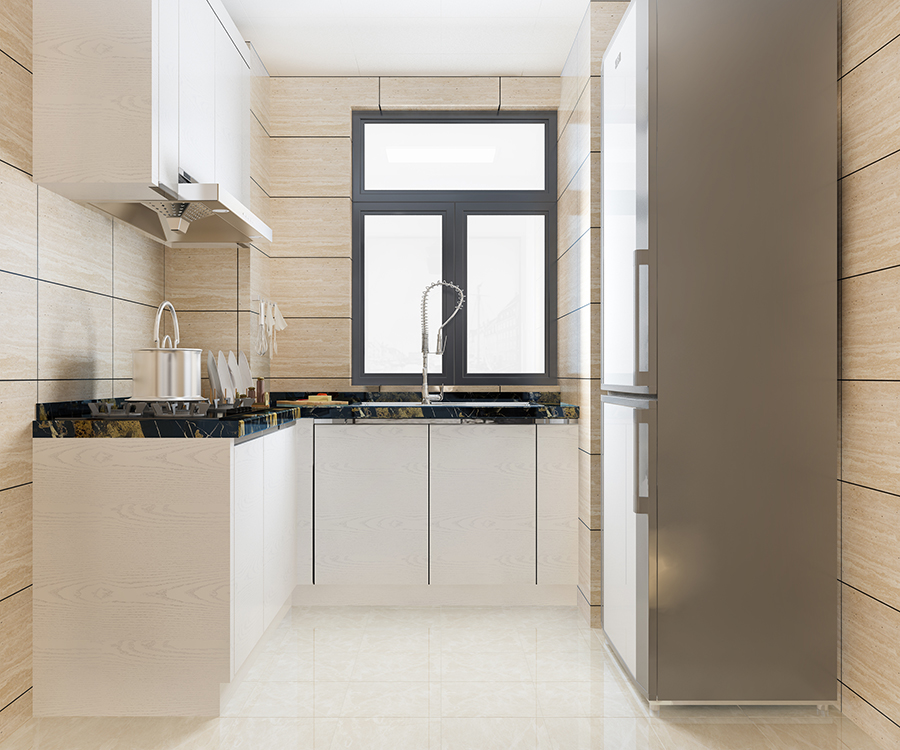
One option is to place the sink in an area that’s not immediately visible when entering the kitchen. For example, if you have a large island or peninsula, consider placing the sink on one of its sides facing away from high traffic areas.
Another option is to install your kitchen sink under a window or behind tall cabinets. This placement will allow natural light into your cooking space while keeping the focus off of the actual fixture itself.
You can also opt for corner sinks which are perfect for small kitchens as they take up less counter space and blend seamlessly with cabinetry.
Integrating Appliances to Conceal the Sink
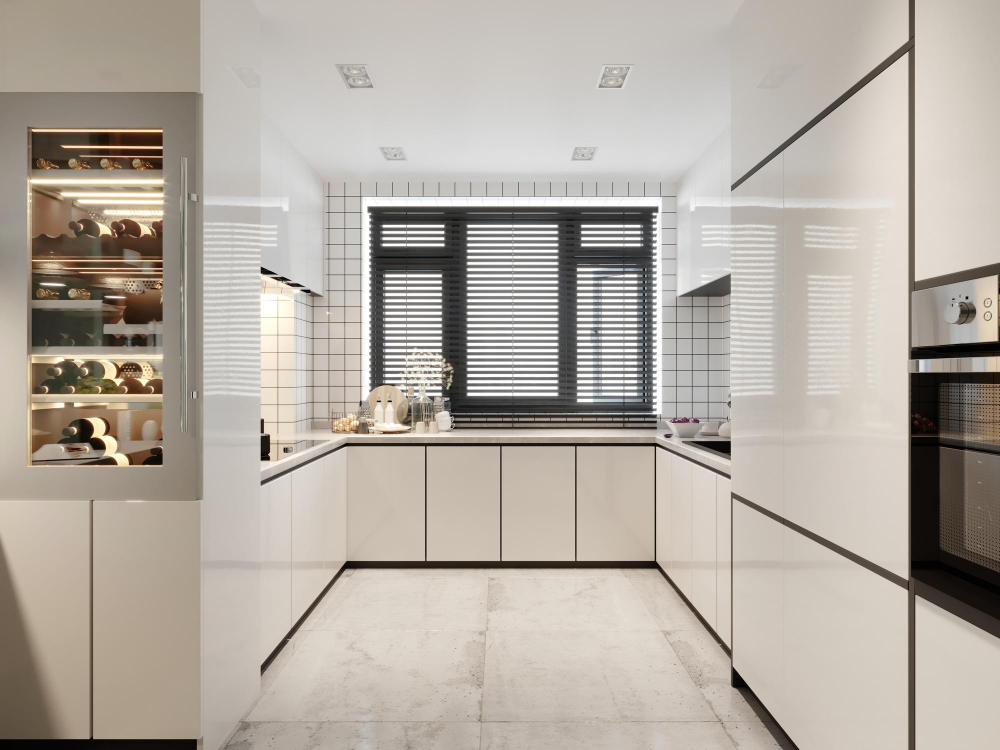
For instance, you can install a dishwasher or refrigerator panel that matches the color and design of your cabinets. This will create a seamless look in your kitchen while also hiding the sink from view.
You could also consider installing an appliance garage above or beside the sink area. An appliance garage is essentially a cabinet with retractable doors where you can store small appliances like blenders, mixers, and toasters when they’re not in use.
By placing this cabinet near the sink area, you’ll be able to effectively conceal it from sight.
If you have an island in your kitchen with built-in appliances such as cooktops or ovens, consider positioning them strategically so that they block views of the sink from certain angles.
Integrating appliances into your kitchen design is not only functional but also adds aesthetic value by creating clean lines and uncluttered spaces.
Matching Sink and Countertop Materials
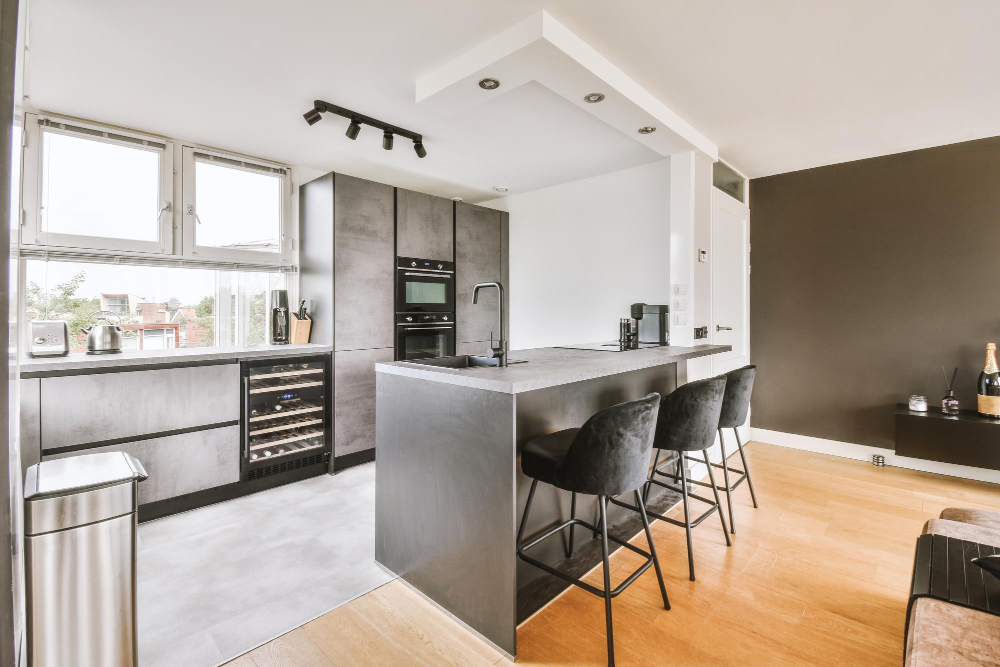
This creates a seamless look that blends in perfectly with the rest of your kitchen design. For instance, if you have a granite countertop, consider installing a granite sink as well.
This will not only make it easier to clean but also create an illusion that there’s no sink at all.
Another option is to choose materials that complement each other such as stainless steel sinks paired with quartz countertops or porcelain sinks matched with marble countertops. The key here is to ensure that both materials are durable enough for everyday use and can withstand exposure to water and heat.
Hiding your kitchen sink doesn’t mean sacrificing its functionality or aesthetics; instead, it’s about finding creative ways to conceal it while still making sure it serves its purpose efficiently. By following these tips on how best you can match different types of sinks and countertops together seamlessly in terms of color scheme or texture choice – you’ll be able transform any ordinary-looking cooking space into something truly extraordinary!
FAQ
How do you cover a sink area?
To cover a sink area, use low-maintenance materials like cloth, vinyl, or polyamide curtains, such as cafe or tier curtains, which provide effortless style without structural boundaries and do not absorb moisture.
What are some creative ways to conceal the kitchen sink when not in use?
Some creative ways to conceal the kitchen sink when not in use include using a custom-fit cutting board, installing a retractable cover or sliding panel, or by designing a built-in sink cover that doubles as a countertop surface.
Which types of materials can be used for creating a hidden sink setup?
A variety of materials, such as natural stone, engineered quartz, and solid surface materials, can be used for creating a hidden sink setup.
How can you utilize cabinetry or furniture to mask the presence of a kitchen sink?
One can utilize cabinetry or furniture to mask the presence of a kitchen sink by incorporating a sliding or hinged panel on a cabinet, allowing it to be concealed when not in use.
